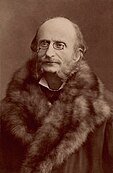|
Today's Featured Article The Main Page includes a section where an adapted lead section from one of Wikipedia's featured articles is displayed. The current month's queue can be found here. The articles appearing on the main page are scheduled by Raul654, the ratified featured article director. You can make new requests or comment on current requests at Wikipedia:Today's featured article/requests. In order for the article to appear on the main page, the article must already be a featured article (to nominate an article for that honor see Wikipedia:Featured article candidates), and it must have a lead section and image suitable for use on the main page. Raul654 maintains a very small, unofficial list of featured articles that he does not intend to appear on the main page. If you notice a problem with an upcoming main page featured article severe enough to require a reschedule, please leave a message on User talk:Raul654. |
Featured article candidates (FAC) Today's featured article (TFA):
Featured article tools: |
|
Today's featured article archive
| |
|
|


